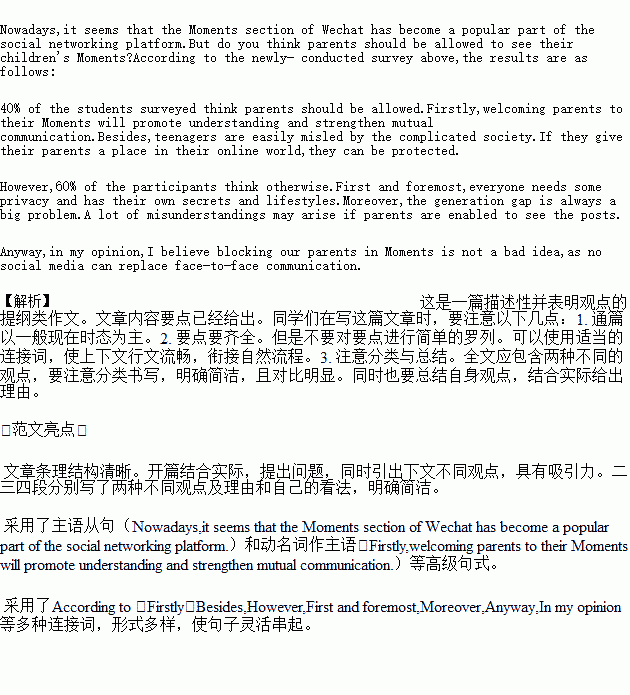题目内容
微信朋友圈似乎已经成为我们与朋友沟通交流必不可少的工具,目前很多中学生也都开通了微信,在朋友圈里发表一些自己的感想。你想让父母看你的朋友圈吗?某英语报社就这一问题做了调查,结果如下:
40%同意 | 60%反对 |
父母可以了解我们的思想动态,及时沟通; 父母可以保护我们不受欺; …… | 每个人都需要隐私,朋友圈是我们的私人空间; 我们与父母之间有代沟,让他们看我们的朋友圈可能产生误会; …… |
请根据以上信息写一篇短文,向该报社描述这一现象,并发表自己的看法。
注意:词数不少于100字。
参考词汇:微信Wechat 朋友圈Moments
____________________________________________________________________________________________
____________________________________________________________________________________________
____________________________________________________________________________________________
____________________________________________________________________________________________
____________________________________________________________________________________________
____________________________________________________________________________________________
____________________________________________________________________________________________
_______________________________________________________________________
 科学实验活动册系列答案
科学实验活动册系列答案
